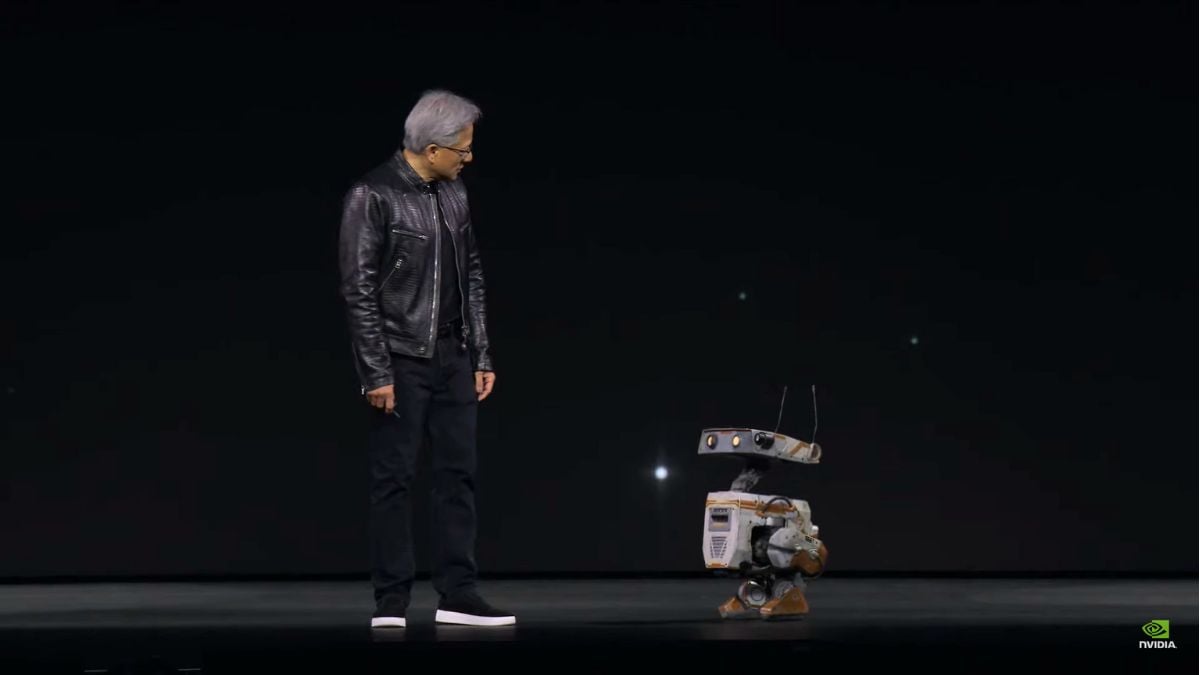At the Consumer Electronics Show (CES) 2025, Nvidia unveiled its groundbreaking new platform, Cosmos, which is set to transform the development of physical AI systems. This state-of-the-art platform incorporates several advanced generative world foundation models (WFMs) and promises to redefine how autonomous vehicles and robots interact with the real world.
What is Nvidia Cosmos?
Nvidia’s Cosmos is an artificial intelligence platform designed to revolutionize physical AI systems, including autonomous vehicles and robots. Launched at CES 2025, the platform integrates multiple generative world foundation models (WFMs), tokenisers, and an accelerated video processing pipeline. These tools combine to help develop AI models that can drive real-world applications, such as robotics and autonomous driving.
Key Features of Nvidia Cosmos Platform
The Cosmos platform offers a comprehensive suite of tools for developers and researchers aiming to build physical AI systems. It includes:
- World Foundation Models (WFMs): These generative models are the backbone of Cosmos. They allow developers to create synthetic data, essential for training AI systems in various real-world environments. This capability is crucial in domains like robotics and autonomous driving, where real-world data is scarce and expensive.
- Advanced Tokenisers and Accelerated Video Processing: These tools optimize the platform for the high demands of physical AI development, ensuring efficient data handling and training processes.
- Guardrails for Development: Cosmos incorporates safety features that act as guardrails during the creation and deployment of physical AI systems, ensuring that robots and autonomous vehicles can perform safely and effectively.
Open-Sourced World Foundation Models for Research and Development
In a move aimed at fostering collaboration and advancing AI research, Nvidia has made its WFMs available for open-source access. This means that developers, researchers, and academic institutions can freely use these models to advance their own AI projects. The availability of these resources is a huge leap in the world of AI development, offering an unprecedented opportunity for innovation.
Developers can access the models through Nvidia’s API catalogue or from Hugging Face, making it easier than ever to integrate these advanced tools into their own projects. The open-source nature of the platform ensures that the latest AI models and training techniques are readily available to a global audience.
How Nvidia Cosmos is Transforming Physical AI Systems
One of the biggest challenges in developing physical AI systems such as robots and self-driving cars is the cost and difficulty of gathering real-world data. Traditionally, physical AI systems require extensive datasets, often involving complex and expensive testing environments.
Nvidia’s Cosmos solves this issue by leveraging the power of synthetic data generation. The WFMs can generate photorealistic, physics-based synthetic data, simulating real-world environments. This data can be used for training purposes, allowing AI systems to learn from highly diverse scenarios, reducing the reliance on physical testing and accelerating development timelines.
Supporting the Development of Robots and Autonomous Vehicles
The Cosmos platform has significant implications for industries focusing on robotics and autonomous vehicles. Robots, whether for industrial, medical, or consumer use, require vast amounts of training data to function properly. Autonomous vehicles also need to be tested in a variety of real-world situations, which can be time-consuming and costly.
By utilizing the synthetic data generated by Cosmos, these industries can create and test AI models more efficiently. Furthermore, the platform’s ability to simulate real-world environments using tools like Nvidia Omniverse allows developers to conduct simulation-based training for robots and vehicles before deploying them in the field.
Adoption by Leading Robotics Companies
Several companies in the robotics and physical AI sectors have already embraced the Nvidia Cosmos platform. Among the notable adopters are:
- 1X Robotics
- Agile Robots
- Agility Robotics
- Figure AI
- Foretellix
- Fourier
- Galbot
- Hillbot
- Neura Robotics
- Skild AI
- Virtual Incision
- Waabi
- XPENG
- Uber
These companies are leveraging the power of Cosmos’ generative models to push the boundaries of innovation in robotics and autonomous vehicles, underscoring the platform’s immense potential to transform industries.
The Future of AI with Nvidia Cosmos
As the demand for advanced AI-driven technologies continues to rise, platforms like Nvidia Cosmos are paving the way for more advanced, scalable, and cost-effective solutions. By open-sourcing WFMs and providing developers with powerful tools for creating physical AI systems, Nvidia is empowering a new generation of innovators to solve complex challenges in robotics, autonomous driving, and beyond.
Conclusion
Nvidia’s Cosmos platform represents a major leap forward in the development of physical AI systems. With its powerful suite of generative world foundation models, open-source access, and tools for creating and testing robots and autonomous vehicles, Nvidia is shaping the future of AI. As companies in robotics and autonomous vehicles continue to adopt this revolutionary platform, the possibilities for innovation are boundless.
Get More Details on the Nvidia Website.







